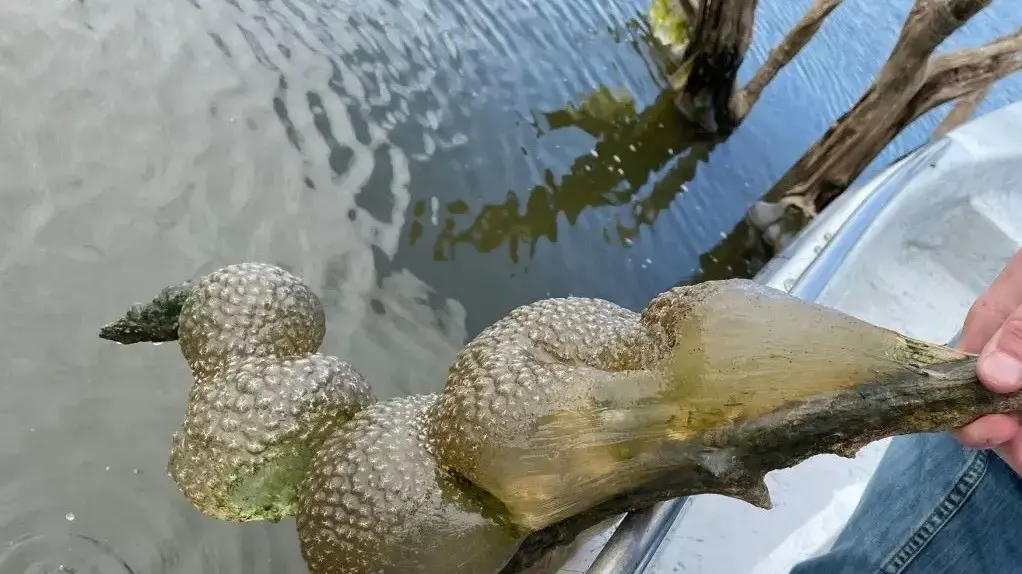A woman saved hundreds of bats frozen by the storm 1:49
(CNN) --
A Texas wildlife rehabilitator nursed more than 1,600 frozen bats back to health in her attic after many of them fell from their roosts during freezing Houston temperatures last week.
Mary Warwick, wildlife director for the Houston Humane Society, told CNN that she has been working with bats since 2019, when another cold snap caused bats in Houston to fall out of their roosts.
But she had never before organized such a large rescue operation.
On December 21, temperatures in Houston dropped from 60 degrees Fahrenheit (15 degrees Celsius) during the day to 22 degrees Fahrenheit (15 degrees Celsius) at night.
"That's a steep drop in temperature for the bats," Warwick explained.
The Houston area is home to eight species of bats, including the tiny Mexican free-tailed bats that roost under several city bridges.
“As their body temperatures dropped, they could no longer hold themselves within the bridge cavity,” Warwick said.
“Some of them started getting so hypothermic that they lost their balance and fell over.”
Warwick was running errands when he realized he hadn't received any calls about bats needing help, which was unusual given the cold weather.
He went to one of Houston's bridges "and saw little dots on the ground," he said.
“There were about 138 bats that had become hypothermic,” he continued.
"They looked dead."
advertising
He went to work collecting the tiny bats into a box in his car, where he used the seat heater to start warming them up.
“I live about 40 minutes from the bridge, and within 20 minutes, they were already starting to move, which gave me a lot of hope,” she said.
These bats fell from their roosts during the freezing temperatures in Houston.
Warwick returned that night to collect another 50 frozen bats.
He then got a call from someone who had found 920 more bats that needed help.
At his home, Warwick sorted the bats to determine which were still alive and which had died, either from the cold or from falling to the ground.
He put them in incubators to raise their body temperatures and then administered subcutaneous fluids.
But taking care of more than 1,000 bats was overwhelming.
So she reached out to Bat World Sanctuary, a nonprofit organization based in North Texas.
Bat World was unable to accommodate such a large contingent of bats, but they helped Warwick come up with a battle plan to care for the frozen creatures.
"We decided that once I stabilized them, I could put them in my attic, where it's cool but not freezing, and that would lower their metabolism so they wouldn't need to eat, but would drink water," he explained.
So Warwick divided up the bats, using boxes to hold each colony together, and left them in his attic to rest and regain their strength.
Several other local citizens also called out bats in need of rescue, bringing the total to 1,602 recovering bats at Warwick's makeshift bat hospital.
They spent about three days total in his penthouse, he said.
Only 115 collected bats died, according to Warwick.
“I was very happy with it,” he said.
“Especially the initial drop, it must be a hard drop, falling 20 feet (6 meters) from the bridge.
It's remarkable that these little guys can pull it off."
And on Wednesday, with temperatures stabilizing in Houston, most of the bats were returned to the bridges from which they came.
Some still struggled to fly properly and were returned to the penthouse, where Warwick said they will receive "additional supportive care."
Warwick and other helpers from the Humane Society rented a scissor lift to bring the bats as close as possible to their roosting area under the bridge.
“We wanted the bats to have the best opportunity to hear and see, motivated by their friends,” he explained.
“They are very social, they actually have friends up there, they know their chirps.”
Warwick said she likes taking care of bats in part because "they're so little, tiny and sweet."
Mary Warwick nursed the bats back to health in her attic while she waited for their temperatures to stabilize.
Warwick and other rehabbers who work with bats are vaccinated against rabies so they can safely work with the animals, he explained.
The Humane Society of Houston recommends that people attempting to rescue bats wear thick leather gloves or avoid touching bats at all.
Bats are a crucial element in Houston's ecosystem, Warwick added.
They feed on mosquitoes and crop-eating insects and also act as an important food source for hawks and other predators.
The Houston Humane Society is currently raising funds for a new facility that will include a dedicated washroom, he said.
“We have moved to their territory, where they live,” he said.
“It is important for us to take care of them.”
bat









